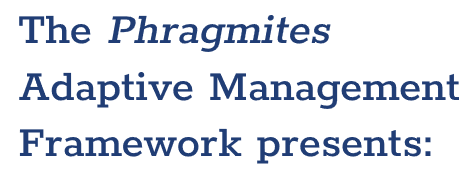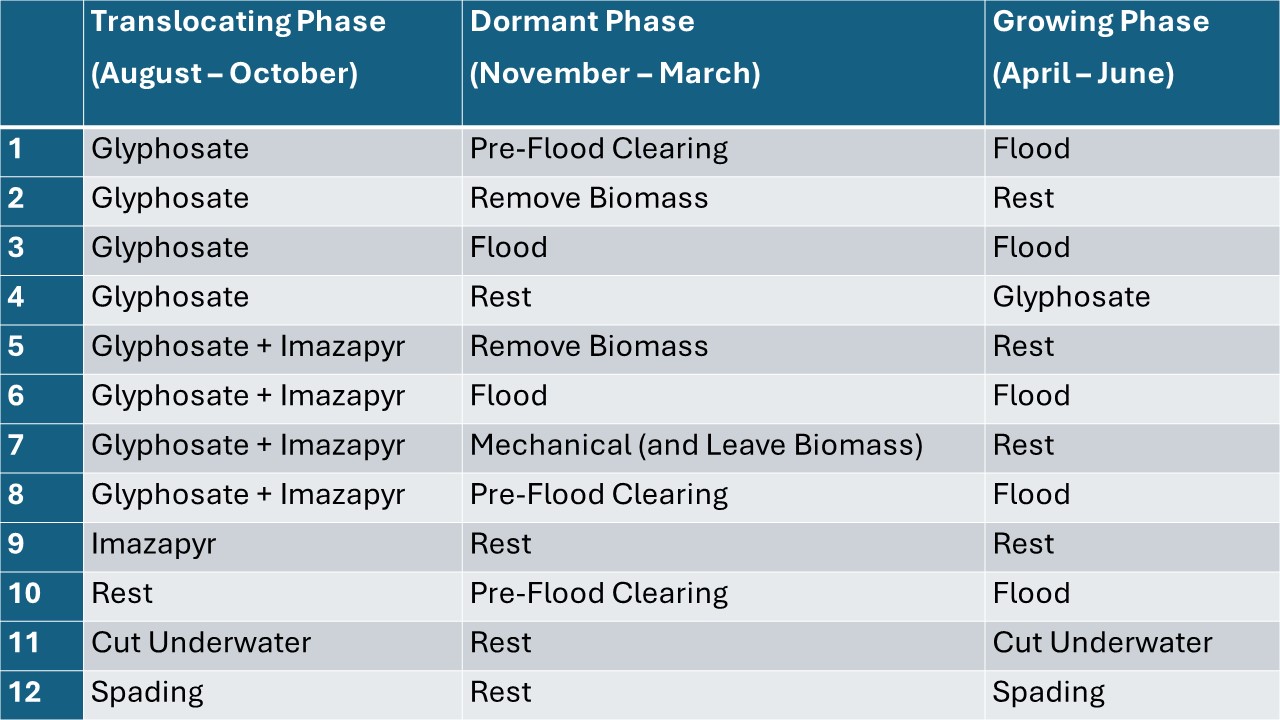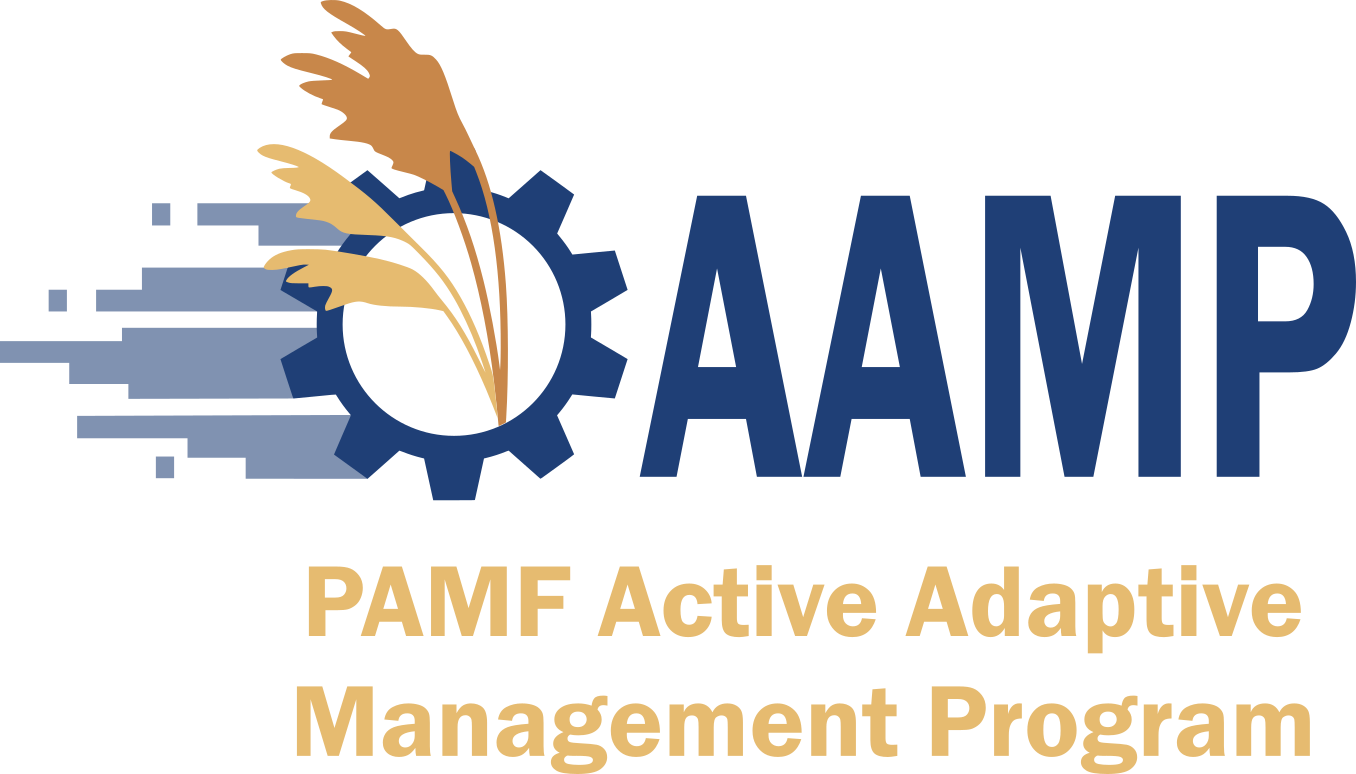

PAMF Active Adaptive Management Program (AAMP)
The Phragmites Adaptive Management Framework (PAMF) is currently in its first year of the Active Adaptive Management Program! Great Lakes Restorative Initiative funding is being used to support Phragmites management activities using one or more of the 12 priority management combinations (see the “What is AAMP?” drop down below). Grantees will collect and contribute monitoring and management data that will inform the PAMF model which aims to improve regional best management practices.
The application period for this grant opportunity has passed, but you can view the RFP here and prepare for the next funding cycle that will be made available in spring of 2025 Looking for something from the original RFP webpage? Click here!
Contact: Sam Tank, Project Manager, Great Lakes Commission; 734-396-6055, sam@glc.org
Invisible
What is AAMP?
AAMP is an extension of the Phragmites Adaptive Management Framework (PAMF; learn more about PAMF here!). The way that PAMF usually works (the “passive” implementation of PAMF) is that a predictive model provides participants with guidance on specific management combinations that are most likely to maximize efficiency and efficacy for each management unit enrolled and active over the next 12 months. This iterative process repeats annually, and the model improves with each subsequent cycle. The management guidance informed by data will continue to reduce the uncertainty surrounding management outcomes, eventually leading to improved best management practices for Phragmites management across the Great Lakes and beyond.
To speed up model learning, additional full data packages (two July monitoring reports and three management reports) are needed. The implementation of these project funds will inform an active phase of PAMF, the Active Adaptive Management Program (AAMP), where specific management combinations are selected in lieu of receiving model guidance. Out of the 16 management combinations that PAMF tracks, 12 combinations have been identified as priority combinations to seek additional data, including:

Overview of AAMP Funding Opportunity
An anticipated $390,000 is available to support Phragmites management activities using one or more of the 12 priority management combinations (see the “What is AAMP?” drop down above). Grantees will also collect and contribute monitoring and management data that will inform the Phragmites Adaptive Management Framework (PAMF) model which aims to improve regional best management practices.
Proposal Period: Accepting application proposals March 11 – April 12, 2024
Eligible Applicants: U.S.-based state, Tribal, or local units of government, lake associations/watershed protection groups, non-profit 501(c)(3) organizations, universities/colleges, conservation groups
Grant Amount: A projected total budget of $390,000 will be available to applicants; individual grants are generally expected to range from $10,000 to $30,000; there is no funding cap and amounts outside of the expected range will be considered
Project Period: July 1, 2024 – July 30, 2025
Geographic Scope: U.S. Great Lakes basin and surrounding watersheds
Contact: Sam Tank, Project Manager, Great Lakes Commission; 734-396-6055, sam@glc.org
AAMP Grant Recipient Checklist
- Submit Phragmites leaf samples for genetic testing by May 31. Genetic confirmation is expected on or before June 14.
- Enroll all project members who will be performing monitoring and reporting for PAMF in the AAMP-specific online Moodle course. View the instructions here to sign up. Important! Please note that there are two other PAMF Moodle courses available, “PAMF Participant Training” and “Refresher: An overview of PAMF.” These courses are specifically for non-grant recipients, and do not fulfill the AAMP grant training requirements!
- Read the PAMF Participant Guide, the definitive source for all things PAMF
- Create an account on the PAMF Web Hub (for instructions, watch this helpful video)
- Enroll your management unit(s) (MU) in the PAMF Web Hub before you monitor! Remember the monitoring period is July 1–31.
- Ensure you have received your PAMF kit (quadrat, calipers, etc.) and optional soil sampling kit prior to July 1. These will be provided to you by mail.
- July 1-31, 2024 – Monitoring period. Monitor each enrolled MU. If you have elected to collect soil samples: Collect soil samples and ship to USGS per return instructions.
- July 31, 2024 – Monitoring report 1 due for EACH enrolled MU.
- November 1, 2024 – Translocating management report due for EACH enrolled MU. Note that management actions must occur after
- April 1, 2025 – Dormant management report due for EACH enrolled MU.
- July 1, 2025 – Growing management report due for EACH enrolled MU. Note that management activities must conclude at least one month before monitoring in July.
- July 31, 2025 – Monitoring report 2 due for EACH enrolled MU; conclusion of grant activities.
- August 30, 2025 – Last submission of final reports and grant deliverables. Final report format is TBD.
If you have deadline questions, contact the PAMF coordinator, Sam Tank (sam@glc.org). Download a copy of the reporting deadlines here.
Online training course
Anyone collecting or submitting data must enroll in the online training course. It should take approximately 2 hours to complete but does not have to be done in a single sitting. Instructions for how to register for the AAMP-specific course can be found here.
Please note that there are two other PAMF Moodle courses, “PAMF Participant Training” and “Refresher: An overview of PAMF” (see below). These are for non-grant recipients, and do not fulfill the AAMP grant training requirements.
Start your AAMP training course now!Resources
- PAMF Web Hub – Where you will submit all PAMF reports. For all additional PAMF resources, view the “Resources” tab in the Web Hub.
- Moodle course – Required training
- PAMF Participant Guide
- Link to RFP
- Management Actions – Details & Descriptions
- Blank Management Reports
- PAMF Video Series – View the three-part video series that explains the background and issues that led to the creation of PAMF, what participation in the framework means, and how participant information is used to generate management guidance.
Join PAMF
Anyone managing non-native Phragmites in the Great Lakes basin can participate in PAMF. Click the button below to get started!
Questions?
Please contact: Samantha Tank, Great Lakes Commission at pamf@glc.org



